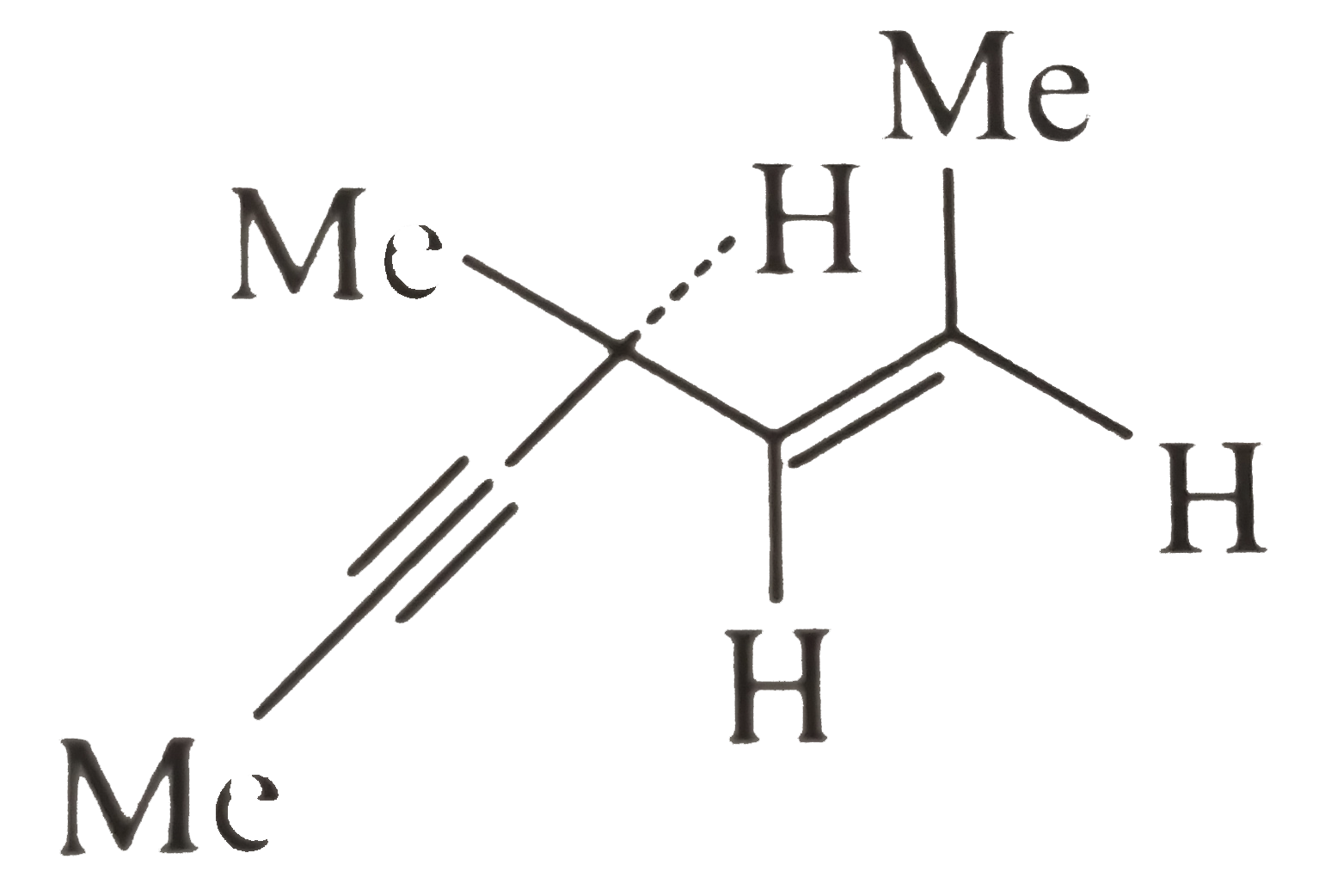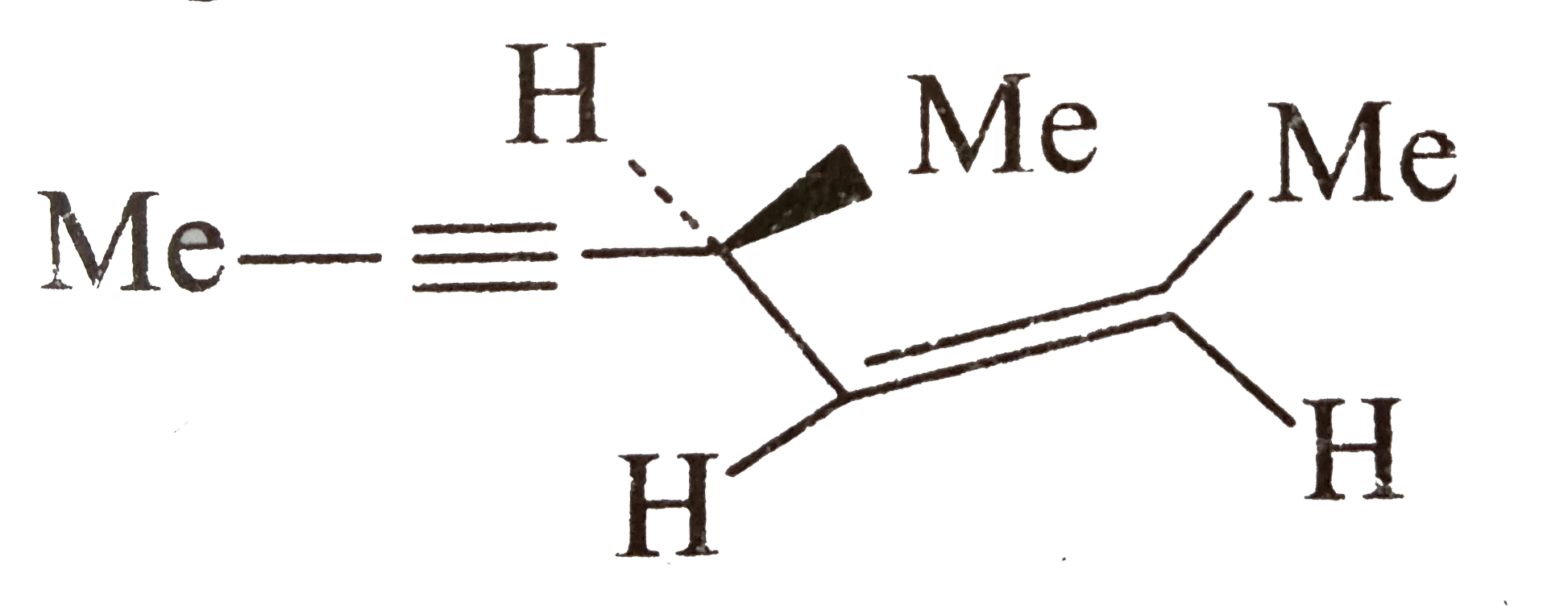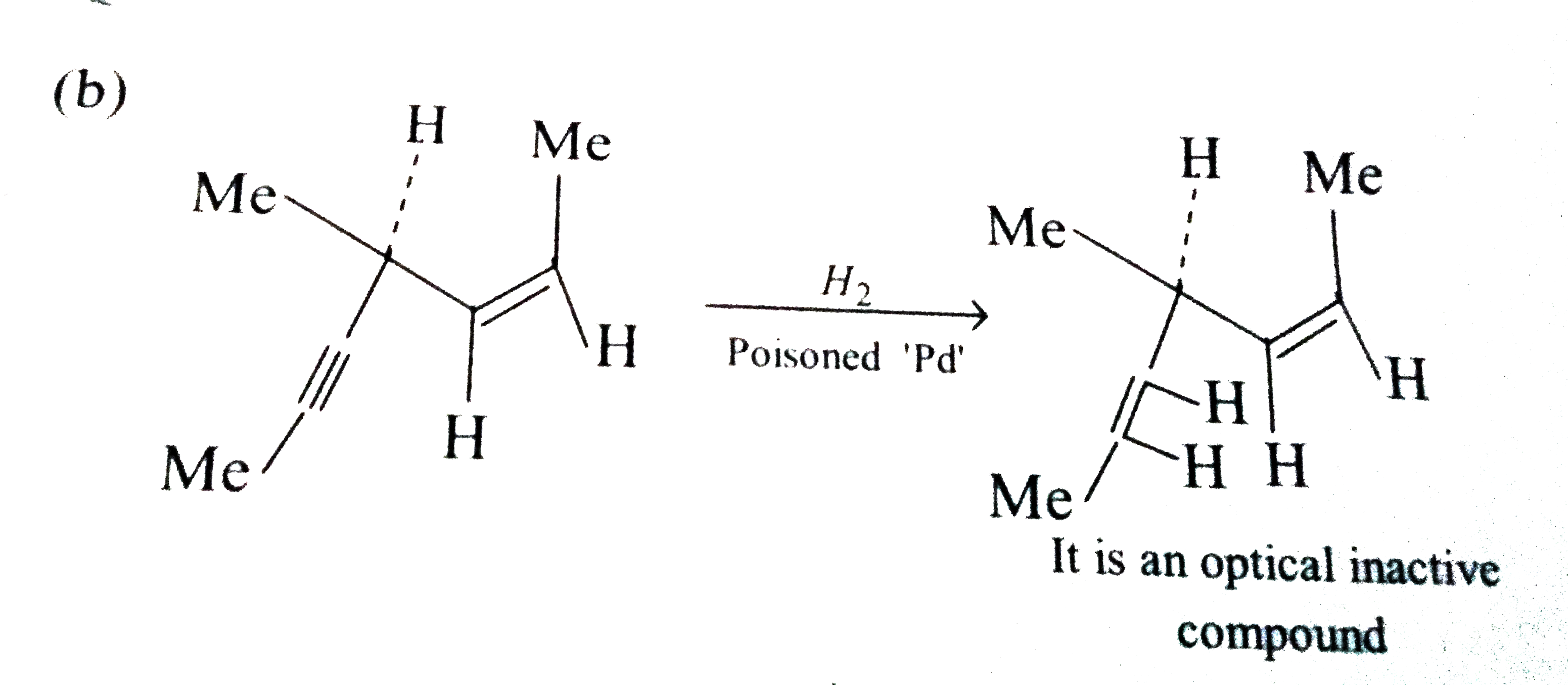Hydrogenation of the adjoining compound in the presence of poisoned palladium catalyst gives

A
An optically active compound
B
An optically inactive compound
C
A racemic mixture
D
A diastereomeric mixture
Video Solution
Text Solution
The correct Answer is:B
|
Topper's Solved these Questions
- HYDROCARBONBook:ERRORLESS Chapter:HYDROCARBONExercise:JEE SECTION (More than one choice correct answer)
Explore 35 Videos
- HYDROCARBONBook:ERRORLESS Chapter:HYDROCARBONExercise:JEE SECTION (Reasoning type questions)
Explore 4 Videos
- HYDROCARBONBook:ERRORLESS Chapter:HYDROCARBONExercise:CRITICAL THINKING (Objective questions)
Explore 24 Videos
- HALOGEN CONTAINING COMPOUNDBook:ERRORLESS Chapter:HALOGEN CONTAINING COMPOUNDExercise:Critical Thinking (Jee (Advanced) 2018)
Explore 1 Video
- IONIC EQUILIBRIUMBook:ERRORLESS Chapter:IONIC EQUILIBRIUMExercise:JS Jee Section (JEE Advanced (Numeric answer type question))
Explore 1 Video
Similar Questions
Knowledge Check
Hydrogenation of the following compound in the presence of poisoned palladium catalyst gives
 Aan optically active compoundBan optically inactive compound.Ca racemic mixtureDa diastereomeric mixture
Aan optically active compoundBan optically inactive compound.Ca racemic mixtureDa diastereomeric mixture
Hydrogenation of the above compound in the presence of poisoned Pd catalyst gives:AAn optically active compoundBAn optically inactive compoundCA racemic mixtureDA diasteromeric mixtureCH3−CH2−CH2−CO−CH2−CH(CH3)2
Catalytic hydrogenation of above compound m the presence of nickel catalyst givesAan optically inactive compoundBan optically active compoundCcompound with plane of symmetryDan tertiary alcohol
 Hydrogenation of the above compound in the presence of sodium in liquid ammonia gives -
Hydrogenation of the above compound in the presence of sodium in liquid ammonia gives -
View SolutionHydrogenation of the compound

with H2 in the presence of Lindle catayst gives
View SolutionHydrogenation of vegetable oils in the presence of finaly divided nickel as catalyst, the reaction is :
View SolutionHalogenation of anisole is carried in the presence of catalyst
View SolutionThe dehydrogenation of n- Hexane in the presence of a catalyst gives ______.
View Solution



